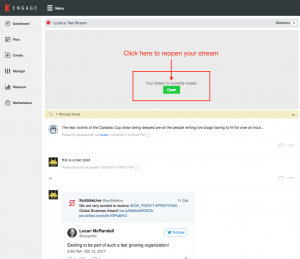If you design your SEO strategies solely to rank your site in search results, know that now you have a new area to explore.
In search of the best user experience, which is its major goal, Google has created a content feed that presents new pages to users according to their interests without them needing to perform a search.
This new feature is called Google Discover, and it provides excellent opportunities for those who want to achieve better results with Google.
When we talk about more results, we mean that, without great optimizations, our Portuguese blog has conquered more than 35 thousand clicks in just one month, besides more than 1 million new impressions over 3 months.
And we want you to be able to enjoy all the advantages of this tool as well!
With that in mind, we have created this article to unveil this feature and enable you to use it in your SEO strategies.
Take a look at everything we’re going to cover:
- What is Google Discover?
- How does Google Discover work?
- Why optimize content for Google Discover?
- How to optimize for Google Discover?
- How to measure the results?
What is Google Discover?
Google Discover is a Google feature that offers content to mobile users based on their interests, without them having to perform a search.
So far, Google has always been reactive, right? The user types in a keyword, and only then does the engine provide links as an answer on the search results page.
This Google service remains the same. However, now the search engine wants to improve the user experience with an active and predictive approach.
The goal is to anticipate the search intention and suggest content that users will probably enjoy.
For this, Google has created a feed — Google Discover — that works as a content hub based on users’ interests.
This feature was launched in 2018, in line with the changes announced by the search engine for its next 20 years.
One of them was the change in the process of queries to obtain information without even needing queries.
In other words, the search engine wants to offer relevant content to users, even when they do not have a specific query in mind. So, Google Discover represents the main movement in this direction.
Before that, in 2017, the search engine had already launched Google Feed, which also presented relevant content and news. Later, this feature was improved, added new types of content, gained a new name and look, and became Google Discover.
With this, Google goes beyond the definition of a search tool and offers new discovery experiences.
How does Google Discover work?
Perhaps you are already wondering: “where is this resource that I have never seen?”.
If you look at the desktop, you won’t find it because Google Discover is only available on mobile.
From your smartphone, you can currently access Google Discover in three ways:
- through the Google app (Android and iOS);
- through the mobile browser, accessing google.com;
- on some devices, by sliding to the right on the home screen.
In the bottom menu, you will find a tab called Discover, represented by the symbol of an asterisk. This is where you will find the feed.
You can scroll through the feed just like on social networks. The contents are displayed on cards, formed by an image, the title, the excerpt, the source, and publication date. When a user touches the card, they are directed to the content page. Check the example below:

The contents that appear in the feed are usually up-to-date. Most of the publications are from a few hours or days before. But Google can also display some older content that makes sense to the user.
In addition, Discover content can also include videos, sports scores, weather forecasts, stock prices, music festival attractions, movie releases, and much more. For each content, Google will choose the most appropriate format.
But how does Google know what your interests are and what content you would most like to receive?
Well, Google knows everything you search for in the search engine!
All these queries represent subjects that are part of your life and that Google understands are relevant to you.
But that’s not all — if you allow it, Google can access a wide selection of information about your interactions on the internet.
Look at what Google can use to customize the contents of Google Discover:
- web and app activities: includes the use of Google Search, Chrome history, actions on websites, apps, and devices using Google services, audio and voice recordings, contact data from devices;
- history and location settings: includes the places you’ve been, as well as the location of your home and work.
All this composes the algorithms that determine which content should appear in Google Discover for each user, in a fully personalized way.
Besides, Google understands that it doesn’t always get it right. That’s why the app relies on the user’s collaboration to create a more relevant content feed. For this, the user has several options to customize their feed.
The user can specify whether or not they want to receive more content like that or if older material is useful at that time.


We use as an example a search for “NFL”, for which Google displays a selection of “top stories”. By expanding this section, you can see the Google Discover article tips and then move on to the subject.
You can also tell Google what topics interest you. For certain subjects that you search in Google, the search engine displays the “Follow” button. If you click on it, you will receive content within that theme.

The app also offers the option to “Manage Interests”, so you can see all the subjects you are following and choose if you want to hide any of them.

Why optimize content for Google Discover?
So, now you know how Google Discover works. As a user, you can now enjoy the application’s discovery suggestions! But as a marketing professional, have you already realized that you could take advantage of this feature for SEO strategies?
Appearing in Google Discovery is one more chance to increase your pages’ visibility and generate more organic traffic to the site.
The potential for the reach is great: when Google Discover was launched, the official announcement informed that Google Feed already had 800 million monthly users.
HubSpot reports that some sites noticed spikes in mobile device accesses in 2019. Investigating the reason, they realized that a large part of the accesses came from Google Discover.
For example, in the case of the Vogue website, the accesses via Discover even exceeded the traffic generated by organic search.
In our own blog, we have already seen this. Content that had been posted a few hours earlier began to perform in our top 10 most accessed content in real-time. And this has already happened with news, complete guides, and several other types of content.
Besides, one of the differentials of Google Discover that allows it to be so popular is that it is totally optimized for mobile.
With the constant growth in the use of mobile devices, it is expected that accesses through the app will increase.
Another advantage of optimizing content for Discover is that the app creates a closer relationship with the user.
Let’s explain that better.
Google search is only used when the user has a demand and wants to clarify a doubt.
On the other hand, Google Discover is not activated by an immediate need — the user goes there to roll the feed, discover new content, and inform themselves as if they were on social media.
Therefore, the use of this feature can become a regular activity and generate user loyalty. If your pages usually appear in the feed for them, your brand is associated with this habit and becomes ever more present in the person’s daily life.
Of course, for this, you always need to produce relevant content for the user and offer a good experience on your site, so that they keep looking for your pages on the feed. That is what we will discuss in the next topic.
How to optimize for Google Discover?
The Google search system has been the object of interest and market experts’ study for a long time.
That’s why we’ve already uncovered many ranking factors and already know many ways to optimize pages with SEO techniques.
On the other hand, there is not much information about Google Discover. The initiative is relatively new, having emerged in 2018 and gaining more relevance in 2019.
Brands are beginning to realize its potential, while some studies are beginning to be conducted to understand Google’s recommendation criteria.
What we know — and what Google itself reveals on this page — is that the Discover feed is assembled and classified with content that the searcher understands to be relevant to each user.
Therefore, we understand that if you want to optimize for Google Discover, this should be the main orientation for your Content Marketing team: produce relevant content based on the buyer persona.
Basically, your content needs to answer the questions and align itself to your persona’s interests. Furthermore, it must follow Google’s guidelines, emphasizing the quality of the user experience, and condemns black hat practices.
Nothing different than what we always say about SEO strategies, right? If you are already doing it in the optimization for SERP, keep doing the same thing in the optimization for Discover.
The difference here is that Google will anticipate the search intent and bring the answer before the user even needs to search.
There are some specific guidelines to boost your chances of appearing in the users’ feed — we used them to get the mentioned results at the beginning of this post.
Now, let’s introduce the main tips for Google Discover optimization!
Use high-quality images
This is a recommendation from Google itself. There are only two guidelines for better performance on the Google Discover support page: produce relevant content and use high-resolution images.
This is because Google selects an image to compose the page’s card in the feed. However, it may appear as a highlight or a thumbnail, depending on the resolution.
According to the search engine, using large images instead of thumbnails on the card causes increases of 5% in click rate, 3% in time spent on pages, and 3% in user satisfaction. So, to enable large images on the Google Discover feed, you must:
- use high resolution images (at least 1200px wide);
- grant Google the right to display your image to users (use the AMP format or fill out this form).
Optimize pages for mobile
Google Discover is only available on mobile devices.
Can you imagine if an article from your blog is recommended in the feed, but no one can read the content because it doesn’t fit the screen? It would be difficult to generate user satisfaction.
Although Google doesn’t acknowledge it, it likely analyzes the user’s signals to know if your page offers a good experience.
And if they access the content and close the page right away, this can be a bad sign that leads Google to no longer recommend your page in the feed.
So, optimize for mobile. For this, you can create responsive pages or AMP.
AMP pages tend to gain priority because they have everything Google wants to offer in a good experience: they are optimized for mobile devices and load faster. They are identified in the feed with the symbol of a lightning bolt.
[image: amp.jpg]
Follow Google News content policies
Google also recommends that sites follow the policies for news so that the content is reliable for the user.
It is not necessary to include tags or structured data for this. You just need to follow guidelines like creating original content, informing who produced the text, offering your contact information, not spamming, having the copyright, and not encouraging violence, hatred, bullying, health damage, or illegal activities.
Make a combination of fresh topics and evergreen content
A Search Engine Journal research identified that most of the content (46%) of Google Discover is news. More than that: the news earns 99% of users’ clicks.


This is a great opportunity to increase traffic to news portals. However, if you are not a media company and work in other industries, how can you take advantage of Google Discover in your content strategies?
Even if Google prioritizes recent news in Discover, nothing prevents it from showing the user some older content, as long as it is relevant and makes sense at that time. So, the tip is to mix fresh and evergreen content in blog posts.
Among the fresh content, you can talk about news from your market, subjects on the rise, stories about your own business, and, of course, keep the frequency of posts always to have new content on the blog.
This kind of content tends to appear more, but it also tends to have a short lifecycle — a 3 to 4 day window to possibly be displayed on the feed.
A nice example from our Portuguese blog was the news about “Facebook Shops”, published in May, which generated a lot of traffic through Google Discover: over 14 thousand impressions and about 1300 clicks in just 5 days!

Among evergreen publications, which “don’t age”, it is important to create high-quality, relevant, and depth content on topics you master.
They tend to appear less in the feed but have a larger window of months or even years of possibly being recommended by Google.
An example of success using this more perennial type of content is our post on Kernel Strategy, which works on more in-depth marketing concepts and is completely different from our normal content.
In Discover alone, we achieved, in a single day, 21,000 impressions and about 600 clicks.

Although the number of impressions was very large, we also observed that the CTR was a little lower. This may be related to the fact that we were dealing with a new concept or because we didn’t clarify what the article was about.
By learning things like that, we keep optimizing this material, testing other SEO titles, H1, and descriptions to see what is most likely to attract the user — always remembering that SEO work requires consistency (well, a lot of consistency) to maintain good results.
Discover the broad themes that interest personas
The choice of links that will appear in the Google Discover feed is arranged around users’ interests.
They are grouped into broad keywords, which represent broad themes, such as:
- Hobbies (e.g., camping, games, recipes);
- Sports (e.g., women’s soccer, Brazilian team);
- Entertainment (e.g., Game of Thrones, Lady Gaga);
- Business (e.g., Digital Marketing, accounting)
- Brands (e.g., Apple, Bank of America).
It is unlikely that long-tailed keywords will represent users’ interests. Therefore, try to understand users’ broad interests (and the respective keywords) that coincide with themes that permeate your company and your market. You should create your blog content around these keywords.

Develop a topic cluster strategy
A topic cluster strategy consists of defining a comprehensive theme to address in a “pillar” content and producing “satellite” content that links to it and strengthens the main post’s authority.
In the case of optimization for Google Discover, the intention is to strengthen your site for one or more broad topics.
As we said, you should define what broad topics your business can address. Then, plan satellite posts on specific themes within the “umbrella” of the main subject.
This way, you strengthen the core content of this strategy and become an authority on that topic, which brings several benefits.
If you are a reference in a user’s interest, your content is more likely to appear in Google Discover.
Post more videos on YouTube
Google likes videos — and so do users. It’s no coincidence that the search engine has bought YouTube and has emphasized video content in search results.
The same goes for Google Discover: most of the recommended content is videos. In addition, YouTube videos are auto-played. In other words, they automatically run on the feed, gain prominence, and attract more clicks than other cards.

So, explore YouTube. Develop a video strategy to take advantage of one of today’s most consumed formats, which generates engagement and helps you to appear in Google Discover.
How to measure the results?
Do your articles already appear in Google Discover? How many visitors do you get from there? What is the rate of clicks on your feed pages?
If you are already asking these questions, know that you can find the answers in Google Search Console.
The tool offers a specific report about Google Discover. The metrics show impressions, clicks, and CTR of content that has appeared in the feed in the last 16 months.
You will only see the numbers if the content reaches a minimum limit of impressions.
Check out how the Discover performance report works!

Google Analytics, on the other hand, does not have a report dedicated to the tool. You could see Google Discover among the source channels of the traffic. Still, Google counts this channel’s visits in organic traffic and, according to some internet sources, as “googleapis.com” in referral traffic.
Perhaps Google Analytics will improve this information as Discover becomes more popular, but there are no plans for this yet. For now, stay with Google Search Console.
Although Google Discover is at the beginning of its life, still being introduced to many brands and users, it already represents a good opportunity.
With this feature, you can gain more organic visits and increase user loyalty to your site.
It is interesting to see how Google Discover points to where the web, searches, and digital platforms are heading: an increasingly visual, personalized, predictive, and mobile content.
So, your whole online strategy should follow this trend as well.
You have already realized the importance of content customization in the current stage of Digital Marketing, right? Then, check out our post and learn all the secrets to creating tailored experiences for your audience!

![[ROCK NA] [EBOOK SEO] Complete Guide](https://rockcontent.com/wp-content/uploads/2024/06/banner_Search-Engine-Optimization.png)






